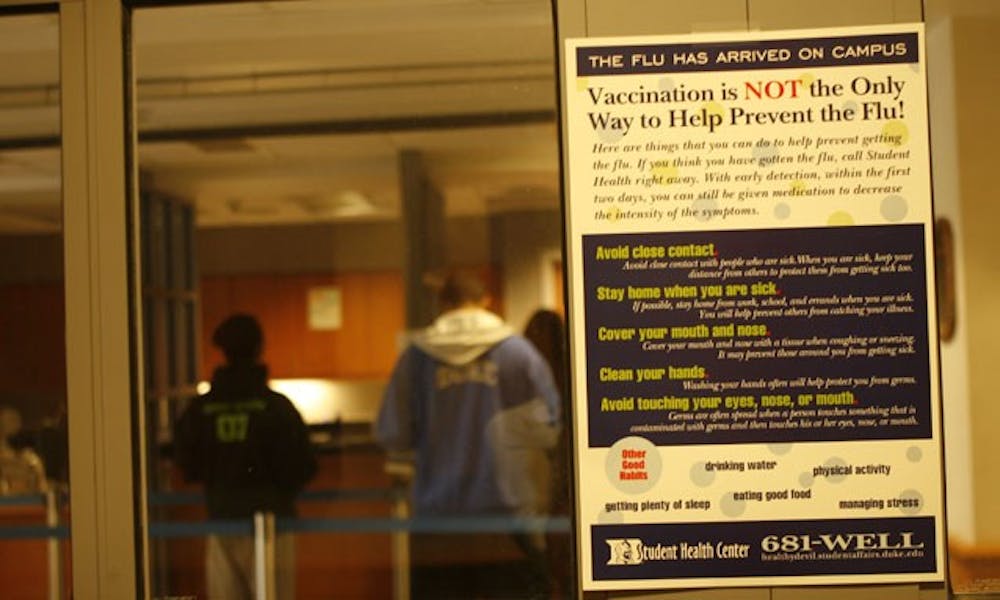Dozens of parents lined up in downtown Durham Wednesday to get their small children vaccinated against the H1N1 virus.
Only children aged six to 35 months, a group considered to be at high-risk for contracting the virus, were eligible to receive the vaccine. Durham County Health Department officials said they expected to go through all 400 injectable doses available at the free clinic.
The clinic, which was held at the Health Department headquarters located on Main Street and Dillard Street, was not the first of its kind in Durham. Last Friday, 387 doses of vaccine were distributed to pregnant women, caregivers and children aged six months to three years, in accordance with the Center for Disease Control’s vaccine distribution recommendations, Health Director Gayle Harris said. Prior to Wednesday’s clinic, Durham had given out 3036 doses in total.
The University is following the CDC guidelines and currently only offers the vaccine to pregnant patients and students, and staff involved in patient care, according to an e-mail sent to the Duke community Oct. 28.
“We receive X amounts of vaccinations, which are very systematically controlled through the state,” said Kyle Cavanaugh, vice president of human resources at Duke. “We only have very small amounts that are available.”
H1N1 vaccine production is running several weeks behind. Only 13 million of the 120 million doses originally promised by the federal government have been distributed.
“The vaccine is produced using a chicken egg as an incubator for the virus to grow in,” said Dr. Ian Greenwald, Duke’s chief medical officer for preparedness. “It’s a slow process that essentially has been around and in use for vaccination production since the 1970s.”
Once the vaccine has been manufactured by companies under contract with the U.S. government, the CDC oversees distribution to states which allocate doses to best serve their populations, said Amanda Aldrich, spokesperson for the CDC. Both cities and private institutions like Duke receive the vaccine through the state health department.
“When the first few batches came out, the number was so small that we sent it just to local health departments so that we could get it across the whole state,” said Amy Caruso, spokesperson for the North Carolina Department of Health and Human Services’ Immunization Branch. “As we’ve gotten larger quantities of vaccine, it’s gone a lot further.... It is reaching private providers and pharmacies and hospitals.”
Get The Chronicle straight to your inbox
Signup for our weekly newsletter. Cancel at any time.

